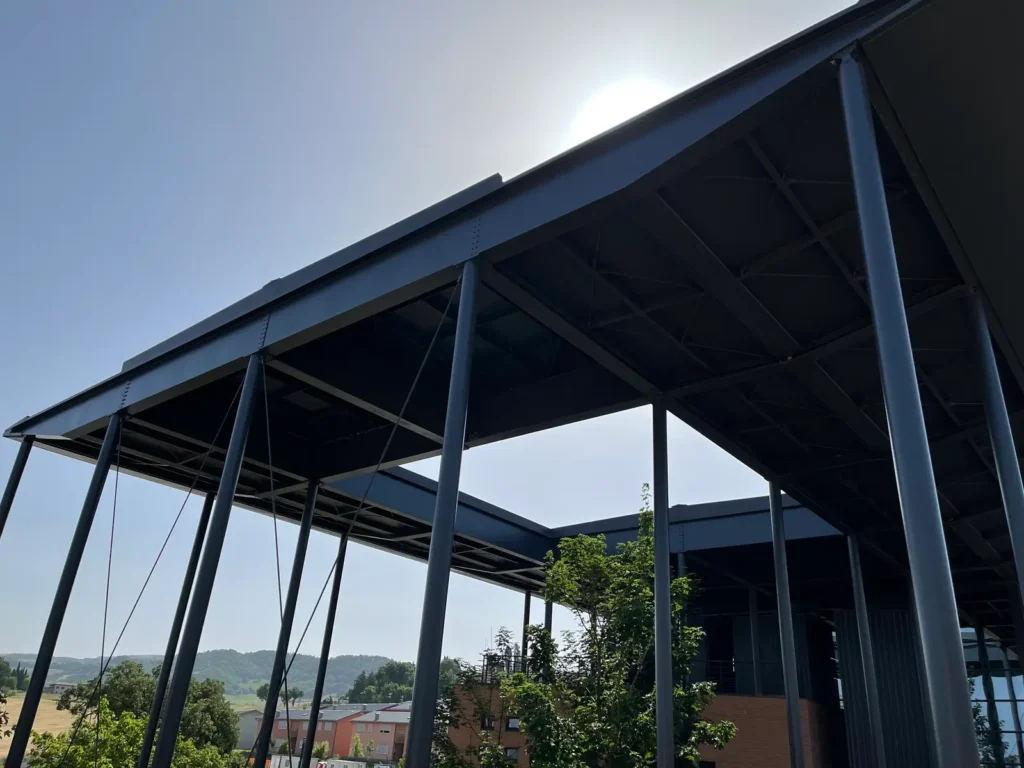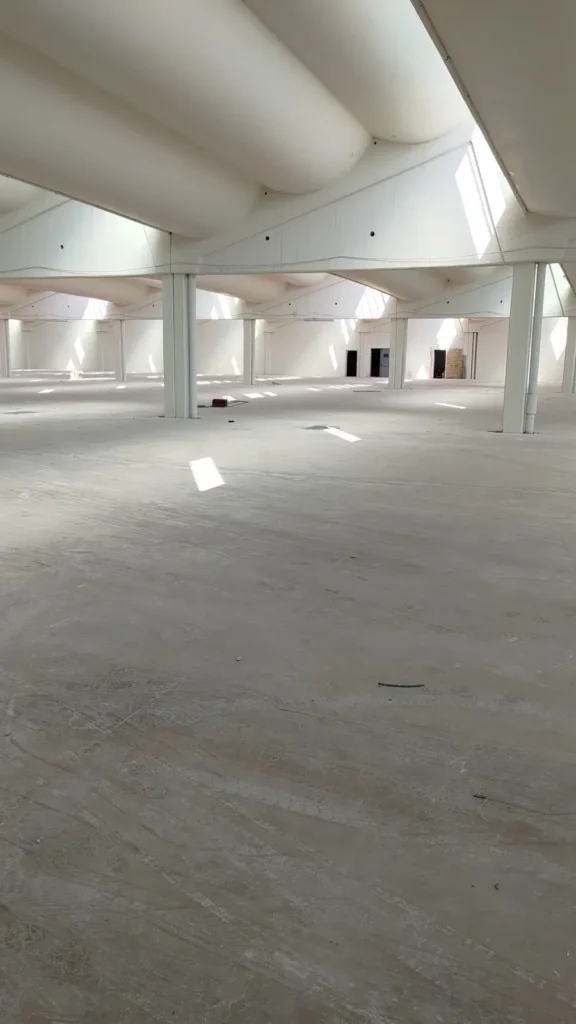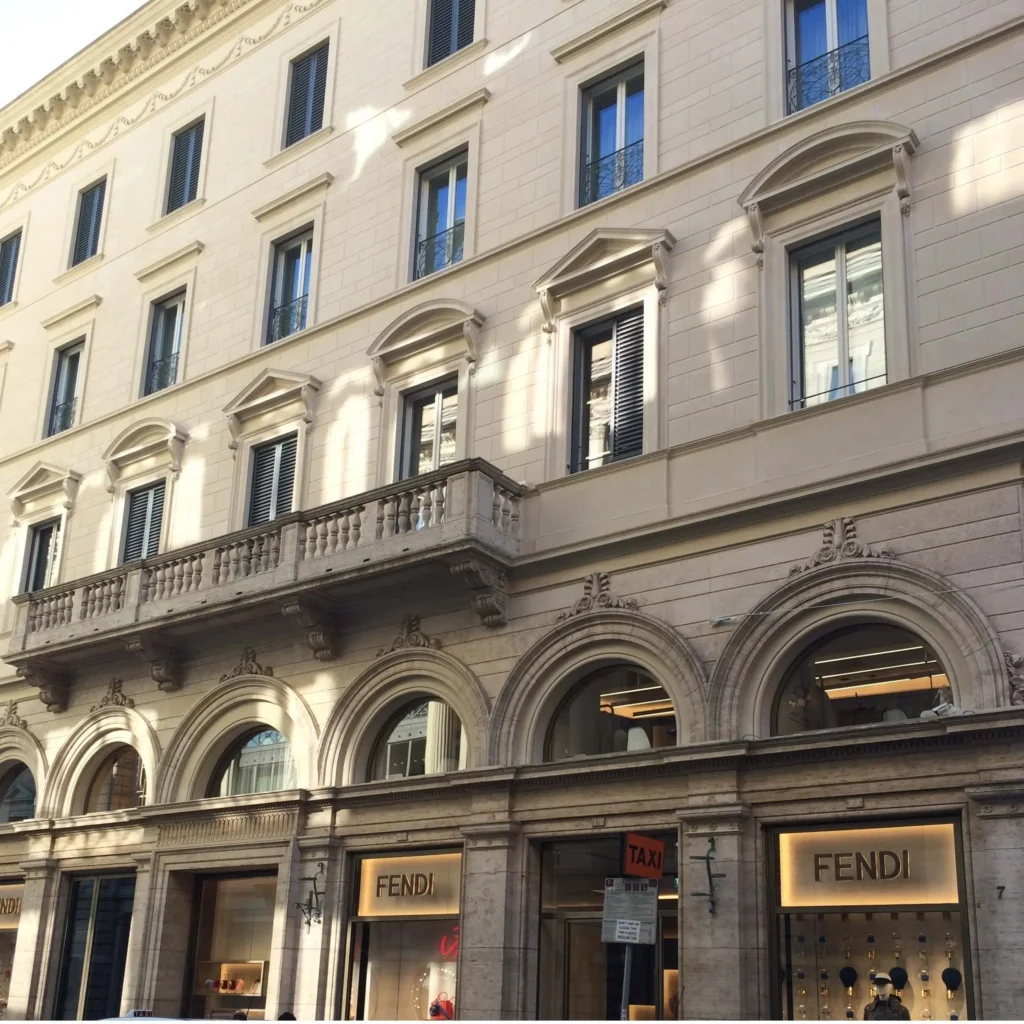Since 1976, SDF VERNICIATURE, a business specialized in metal surface protection treatments, has affirmed its unwavering commitment to the painting of steel structures both at the national and international level. L’azienda è specializzata nei trattamenti di protezione superficiale delle carpenterie metalliche.
Residential and industrial painting services
Building protection and decoration
Painting and coating for the protection and decoration of private homes, public buildings (schools and universities, hospitals, airports, etc.), supermarkets and shopping centers, and industrial plants.
Painting

Interior painting

Interior painting is a service to ensure a uniform finish on the interior walls of buildings that has been popular for a long time as it still is today. Painting is highly valued in any environment for its convenience and cost-effectiveness, not to mention its aesthetic value. In this service, interior surfaces can be painted with tempera, breathable, washable and enamel.
Painting of interior walls requires careful preparation of the substrate, on the proper execution of which the result of the subsequent treatment largely depends. Plaster that is not perfectly dry and hardened should be avoided. If the plaster shows imperfections, such as stains, mold, moisture or chalking, it should be fixed before painting.
Tempers are paints made from water and natural or synthetic pigments. They are breathable and washable, but not water-resistant. Tempers are suitable for interior walls in rooms where significant amounts of water vapor are present, such as in bathrooms and kitchens, whose walls and ceilings have been treated with breathable plasters. In these cases, it is necessary to use paint products that allow the passage of vapor by preventing the formation of condensation (breathable paints).
Washable paints are suitable for surfaces where cleaning is required on a daily basis; they are resistant to water and household cleaners.
Enamels are solvent- or water-based paints used to finish interior and exterior surfaces made of wood, iron or other materials. Enamels are resistant to water and household cleaners.
The choice of paint depends on the needs of the room to be painted.
Exterior painting

Painting exterior surfaces is an important operation to maintain the appearance and functionality of buildings. There are two types of painting products: mineral-based and synthetic-based.
Mineral paints, which contain ingredients such as lime and silicates, are among the most breathable materials, as they consist of mineral particles that allow water vapor to pass through them.
In addition to breathability, mineral paints also provide other advantages, including:
- Durability: they are materials that are very resistant to weathering and wear and tear.
- Fire resistance: they are fire retardant and can help protect the building in the event of a fire.
- Biocompatibility: being natural materials, they do not release harmful substances into the environment.
For these reasons, mineral paints are an excellent choice for finishing exterior surfaces. They are an environmentally friendly and durable solution that can help improve the health and safety of the building.
Synthetic paints are an increasingly popular choice for finishing exterior surfaces because of their many advantages. In particular, their greater resistance to weathering and UV radiation makes them an ideal solution for areas with sunny climates or severe temperature fluctuations.
Weather resistance is the ability of a material to withstand natural elements, such as rain, snow, wind and sun. Synthetic-based products are extremely resistant and can last for many years without deteriorating.
UV resistance is the ability of a material to resist the action of the sun’s ultraviolet rays. UV rays can damage materials, causing them to fade or deteriorate. Synthetic paints are extremely UV-resistant, and can maintain their color and luster for many years.
In addition to weather and UV resistance, synthetic paints also offer other advantages, including:
- Easy maintenance: synthetic paints are generally easier to clean and maintain than mineral paints.
- Wide range of colors and finishes: synthetic paints are available in a wide range of colors and finishes, for a customized look.
Anti-carbonation coatings
Carbonation is a chemical process that can corrode iron reinforcements, altering the appearance of the façade and compromising the strength of the structure. Anti-carbonation paints protect concrete surfaces from the degradation generated by carbonation. Refers to “Environmental Sustainability” and “Healthiness of Environments”
Decorative coatings
Specialist in the creation of decorative coatings, such as glazes and patinas, our staff have specific skills in creating aesthetically striking textural effects. In particular, decorative stucco and Venetian stucco are among the most widely used techniques for creating textural effects with great aesthetic impact.
Glaze is a decorative technique that involves applying a thin layer of transparent or semitransparent paint to the surface to be decorated, then using brushes or sponges to create outstanding color and texture effects. Glaze is often used to create aging effects or to give depth to a surface.
Patination is a decorative technique that involves applying a layer of paint to the surface to be decorated, then using brushes or sponges to create outstanding color and texture effects. Patination is often used to speed up the natural aging process or to give depth to a surface.
Decorative plaster is made from lime, marble and sand that is applied to walls and ceilings. Due to its soft and velvety texture, it creates outstanding textural effects. In addition, its versatility allows for a wide range of decorative effects, from classic to modern styles. Venetian plaster is a decorative technique which originated in the Italian city of Venice in the 15th century. It involves the application of a layer of lime and marble-based plaster that is then smoothed with a trowel to achieve a marbled effect.
Venetian plaster is highly valued for its elegance and refinement and is often used to decorate walls and ceilings in different rooms, from the kitchen to the bathroom, from the living room to the bedroom.
How to choose color
In the area of paints, color choice can be made based on international color systems and sample books. Among these, the most widely used are RAL, PANTONE and NCS Natural Color System. The NCS system was edited by the Scandinavian Color Institute in Stockholm and is based on a logical system of color sorting and how colors are perceived by humans.
The NCS system is based on six elementary colors, and the identification of hues is determined by three factors: light/dark, that is, how much white or black component is present; chromaticity, that is, to which color family the hue belongs; and a percentage value that identifies the saturation of the color itself.1.
The RAL system, on the other hand, was created by the German Reich Committee and consists of various types of folders. RAL 840 HR was the first to be issued in 1927 and has a semi-gloss appearance. Later RAL 841 GL of glossy appearance was made. In 1993 the RAL DESIGN System was made to also meet color requirements in the decorative sector. 1
Finally, the PANTONE system, created in the 1960s by Lawrence Herbert, is a color-coding system used mainly in the graphics industry which involves a series of numerical codes that uniquely identify colors.